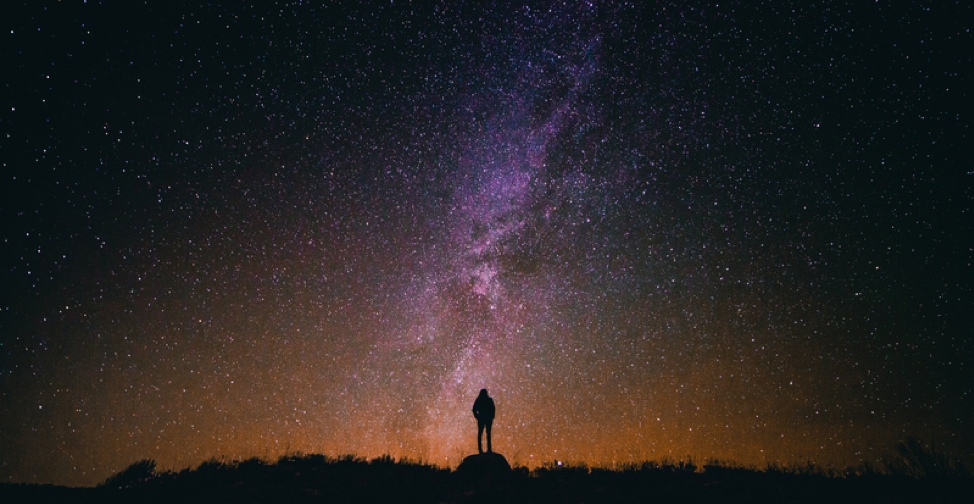
When was the last time you saw the Milky Way? If you live in the DC metro area, probably not lately. A natural night sky is one of nature’s most amazing displays, but because of light pollution, every year, fewer of us will experience it. Our cities are awash in excessive artificial light.
Light pollution or “photo pollution” is caused by poorly designed, selected, installed, or overused artificial light at night (ALAN). Not only does light pollution deprive us of the awe-inspiring night sky, but our understanding is growing of its negative effects on the nocturnal environment and human health.
My husband and I lived for many years in New Mexico near a large tract of public land with all the wildland amenities. The night was dark enough to see thousands of stars and the brush stroke of the Milky Way overhead. We had lived in Maryland just a few months when we (naively) decided to drive a few miles out of town to watch the Perseids meteor shower. But we could not escape the urban glow of light, and the meteor shower was hardly visible.
Residents of urban areas like the DMV have lived with light pollution for so long that it may seem normal. But lighting up the night is not normal, and it is far from necessary. There are compelling reasons, and simple steps we can take, to reduce light pollution.
ALAN and the nocturnal world
Darkness at night is as essential for life as sunlight. All of life has evolved with and relies on, the earth’s fundamental cycles of day and night. Nocturnal creatures evolved for darkness and low light, and are profoundly and negatively impacted by ALAN. Light at night distracts nocturnal and migrating birds and sea turtles, causing them to fly into illuminated buildings or wander into traffic. Light obscures the flashing signals of breeding fireflies. It disrupts the nocturnal breeding of amphibians, as anyone who has tried to observe a croaking frog with a flashlight. Recent research has shown that even aquatic invertebrates and migrating fish are affected. In urban and suburban areas, nocturnal mammals such as foxes and rodents may experience disruptions to hunting and foraging patterns and increased predation risk.
The physics of light and color and the physiology of vision help to explain the effects of ALAN. Colors on the electromagnetic spectrum range from infrared (long wavelength, low frequency) to ultraviolet (short wavelength, high frequency). In between are the colors visible to humans: red, orange, yellow, green, blue, and violet. Animal vision is provided by two types of photoreceptors in the eyes: cones and rods, which differ in sensitivity to the wavelengths of the color spectrum. Cones are responsive to shorter wavelengths and provide diurnal organisms with excellent color vision in bright light and daytime. Rods respond to longer wavelengths and are extremely sensitive to small amounts of available light. Nocturnal animals have many more rods than us and see much better at night, and they avoid the intense light of short wavelengths.
Although humans see better by day, we do have rod vision and can see in low light. It does take a few minutes to adjust from artificial light to night vision, which is why stargazing is easily “ruined” by a passing car. Usually, we don’t have the patience for our rod vision to kick in, but instead, simply flip a switch or get a flashlight.
Light wavelength, temperature, and color
The Kelvin temperature scale (abbreviated K) is used to measure the color temperature of a light source and is helpful when shopping for an environmentally friendly light. A lower K equates to a longer wavelength toward yellow, which we perceive as a warm light. These longer wavelengths are generally easier on nocturnal animals. A higher K equates to a shorter wavelength toward blue and violet, which we perceive as cool white light. Our electronic devices emit light in the blue wavelengths. Research suggests that excessive exposure to these short wavelengths can negatively affect human health and animal behavior.1
LEDs (light emitting diodes) are energy efficient and are widely replacing other types of light bulbs. Although they can save energy, and thus cost, they emit light in the blue to ultraviolet spectrum. Early LEDs were over 3500K, far too bright for reasonable outdoor applications. By comparison, a 100-watt incandescent bulb has a color temperature of around 2800K. The K temperature is labeled on the product package. Environmental organizations, governments, and industry recommend that LED lights used outdoors should not exceed 3000K.
Preventing “trash light”
“Trash light” is the result of unshielded and unnecessary lighting. One estimate is that one-third of all lighting in the U.S. is wasted “at an annual cost of $$3.3 billion and the release of 21 million tons of carbon dioxide per year.”2 Common examples are “light trespass” into a neighbor’s house or adjacent wetlands and forests, and glare into a pedestrian’s or driver’s eyes.
The correct position, shield, timing, and location of lights are essential considerations. The purpose of lighting should not be light for its own sake, but to illuminate a space or object. Unshielded lighting is counterproductive. Our vision cannot adjust to light and dark so rapidly, and it is harder to see amid the bright lights and deep shadows produced by excessive light. The source of the light itself (e.g., the bulb) should not be visible, because a light directed into one’s eyes is blinding, not illuminating. “Full-cutoff” shielding for fixtures keeps the light pointed downward into the space where illumination is needed, and prevents light from escaping onto adjacent areas that need darkness. Fixtures should also be mounted as low as possible to prevent light from escaping the target area. Lights can be put on timers or motion sensors or simply turned off when not in use.
How far should we have to travel just to see the stars, hear frogs, or admire fireflies?
Although humans benefit from ALAN, we cannot disrupt nature’s relationship to light without consequences. The good news is that light pollution prevention is a low-hanging fruit that doesn’t require expensive infrastructure or controversial regulations. A good way to start rediscovering the night is to ask oneself “Is this light even necessary?” If not, skip it! If so, there are many ways to mitigate ALAN’s impact. See the links below for more resources. Explore the research, conduct citizen science, join a dark sky group, and lobby your local officials for responsible lighting.
Footnotes:
2 https://www.darksky.org/light-pollution/energy-waste/
More Resources:
http://cescos.fau.edu/observatory/lightpol-econ.html
http://www.illinoislighting.org/safety
https://www.thoughtco.com/understand-the-visible-spectrum-608329
https://www.darksky.org/our-work/lighting/
dgs.maryland.gov/Pages/GreenOperations/GreenPurchasing/Guidelines/lighting.aspx
MD lighting task force report: https://msa.maryland.gov/megafile/msa/speccol/sc5300/sc5339/000113/000000/000008/unrestricted/20030006e.pdf
Montgomery County lighting codes:
Chapter 59-6 GENERAL DEVELOPMENT REQUIREMENTS. 59-6.4.4. C.4 – Residential Entrances; 59-6.3.8 Open Space; 59-6.4 General Landscaping and Outdoor Lighting.
Deborah Sarabia is the founder and president of Ecorizons Conservation Consulting, based in Gaithersburg, MD, and president of Seneca Creek Watershed Partners, a 501c3 organization in Montgomery County.

